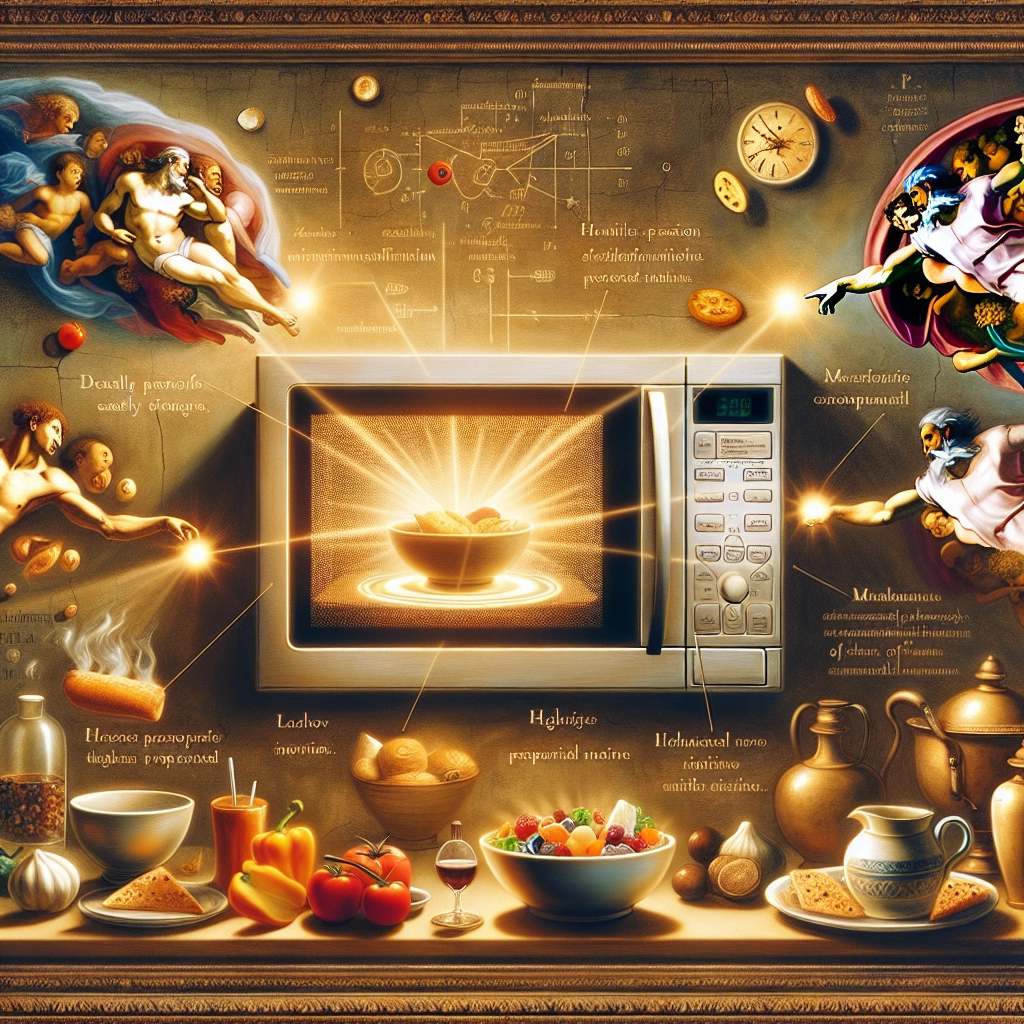
- Published on
- Authors

- Name
- ric de yuga 😄
🌮 From Frozen to Fiesta: The Microwave Magic 🌮
Picture this: you're hungry, short on time, and in need of a quick meal. You reach for a frozen burrito, pop it in the microwave, and within minutes, you're treating your taste buds to a delicious, piping hot feast. It's like magic, right? But have you ever stopped to consider the science behind this culinary sorcery? In this blog post, well unravel the mysteries of microwave cooking and explore how these ingenious appliances heat our food to perfection.
📡 The Power of Electromagnetic Waves 📡
At the heart of every microwave oven lies a remarkable device called a magnetron. This unassuming component is responsible for generating the electromagnetic waves that give microwaves their name and heating power. These waves, which have a frequency of around 2.45 GHz, are able to penetrate food and cause the water molecules within to vibrate rapidly.
But why does this vibration lead to heating? It all comes down to a process called dielectric heating. As the water molecules oscillate back and forth in response to the electromagnetic field, they create friction and collide with neighboring molecules. This friction generates heat, which then spreads throughout the food, cooking it from the inside out.
💧 The Dance of Water Molecules 💧
One of the key reasons microwaves are so effective at heating food is their ability to target water molecules specifically. Water is an excellent absorber of microwave energy, which means that foods with a high water content, such as vegetables, soups, and sauces, heat up quickly and evenly in the microwave.
However, this also means that foods with little or no water content, like breads and pastries, may not cook as well in the microwave. In these cases, the lack of water molecules can lead to uneven heating and less-than-ideal textures.
🥗 Preserving Nutrients and Saving Time 🥗
Not only are microwaves convenient, but they can also be a healthier cooking option compared to other methods. Because microwave cooking often requires less water and shorter cooking times, it can help preserve the nutrients in our food.
Additionally, the rapid heating of microwaves means that we can enjoy our meals in a fraction of the time it would take to cook them using traditional methods. This is a huge plus for those of us with busy schedules who still want to enjoy a home-cooked meal.
🔍 Microwave Misconceptions: Separating Fact from Fiction 🔍
Despite their widespread use, microwaves have been the subject of numerous misconceptions over the years. Let's take a moment to dispel some of the most common myths:
Microwaves make food radioactive: This is simply not true. Microwaves use non-ionizing electromagnetic radiation, which does not have enough energy to make food radioactive.
Microwaves destroy nutrients: While it's true that any form of cooking can lead to some nutrient loss, microwaves can actually preserve more nutrients compared to other methods due to shorter cooking times and less water usage.
Microwaves leak dangerous radiation: Modern microwaves are designed with safety features that prevent radiation from escaping the oven. As long as your microwave is in good working condition and the door closes properly, you needn't worry about harmful radiation leaks.
🎉 Embracing the Microwave Revolution 🎉
So, the next time you find yourself marveling at the speed and convenience of your microwave, take a moment to appreciate the fascinating science that makes it all possible. From the electromagnetic waves generated by the magnetron to the dielectric heating of water molecules, the magic of microwave cooking is rooted in a complex interplay of physics and food science.
By understanding how microwaves work, we can unlock their full potential and enjoy quick, easy, and nutritious meals that fit seamlessly into our busy modern lives. So go ahead, embrace the microwave revolution, and let the culinary magic unfold!
